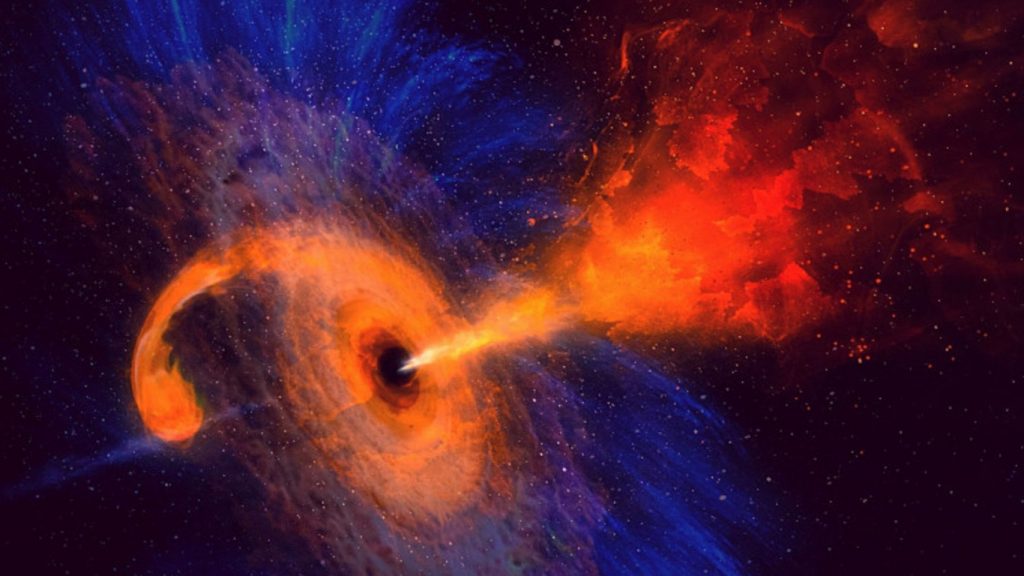Last year, there was a new ‘silent‘ black hole detected within a globular cluster called NGC 1850. It is almost 11 times the sun’s mass. It is said that it will slowly engulf its cosmic companion star even though it is not exactly like the black hole that we know.
This observation can lead to the understanding of the origin of black holes in galaxies.
It is interesting to note that black holes cannot be observed directly. They are detected through the existence of binary systems where a visible star is in orbit with a dark void that is eating the star up.
The new study is spearheaded by Sara Saracino from Liverpool John Moores University in the U.K. Her team has detected the new black hole’s interaction with a companion star in a globular cluster (of stars) called NGC 1850. This newly found black hole is being called NGC 1850 BH1 and it is said to be around 100 million years old.
This black hole is located in the Large Magellanic Cloud (LMC) which is a satellite galaxy of our own Milky Way. This finding was a result of the new in-depth search of scientists for stellar-mass black holes in young and gigantic stellar clusters that lie in the LMC. The search was conducted with the help of multi-epoch MUSE (Multi-Unit Spectroscopic Explorer) and captured by the ESO’s Very Large Telescope (VLT). Radial velocity variations are said to play a significant role in the existence of this black hole. The size of the -sequence turn-off star (MSTO) in the binary is around 4.9 times the mass of the sun.
It’s semi-detached, has a period of almost 5 Earth days, and an orbital inclination of 38°. When the companion star will go past its main-sequence phase, the binary system will go through a Roche-Lobe overflow.
Afterward, a “stable mass transfer and significant X-ray emission,” will occur. “Mass transfer will likely end when most of the hydrogen envelope of the donor star has wither been transferred to the companion or been lost from the system, leaving a helium star core,” said the astronomers, in a press release. “If so, it will likely experience another phase of mass transfer (and X-ray emission) when the star burns helium in shell, ending up as a black hole + white dwarf system.”
This means that the black hole will keep feeding off the star till it is reduced to a soft white mass called a white dwarf. This new and young black hole will lead to the discovery of more that are present in different galaxies in their “initial mass function”.

